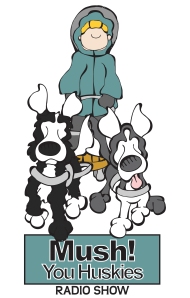Dog Sledding Legends-Charlie Belford on Mush! You Huskies
 On the radio program, Mush! You Huskies we are continuing our summer series on the Dog Sledding Legends that made this sport what it is. This week we talk about Charlie Belford.
On the radio program, Mush! You Huskies we are continuing our summer series on the Dog Sledding Legends that made this sport what it is. This week we talk about Charlie Belford.
Listen to Mush! You Huskies Radio Show: Charlie Belford
Doc Belford was one of the most influential of Siberian breeders and racers. He was a close friend of that OTHER racing vet, Doc Lombard. With Dick Moulton making a threesome, these men undertook to found SEPP– a move within the ranks of SHCA to retain the racing qualities of the Siberian Husky. Doc Belford lived much of the important racing history that we read about in books. He was a World Champion and raced Alaska shortly after Lombard initially went there from New England and came back with many tales of the tough trails, tough drivers, and tougher dogs. He started in Siberians when his father bought dogs from Seppala. He was a member of the newly formed NESDC Juniors. And he loved the sport. Dr. Belford was recognized for his authoritative knowledge of the racing Siberian and was asked abroad to speak and lecture in the Scandinavian countries.
Citation: http://www.GoMush.com
___________________
Dr. Robert Forto is the Dog Sledding Examiner, a musher training for his first Iditarod under the Team Ineka banner, and the host of the popular, Mush! You Huskies radio show.

